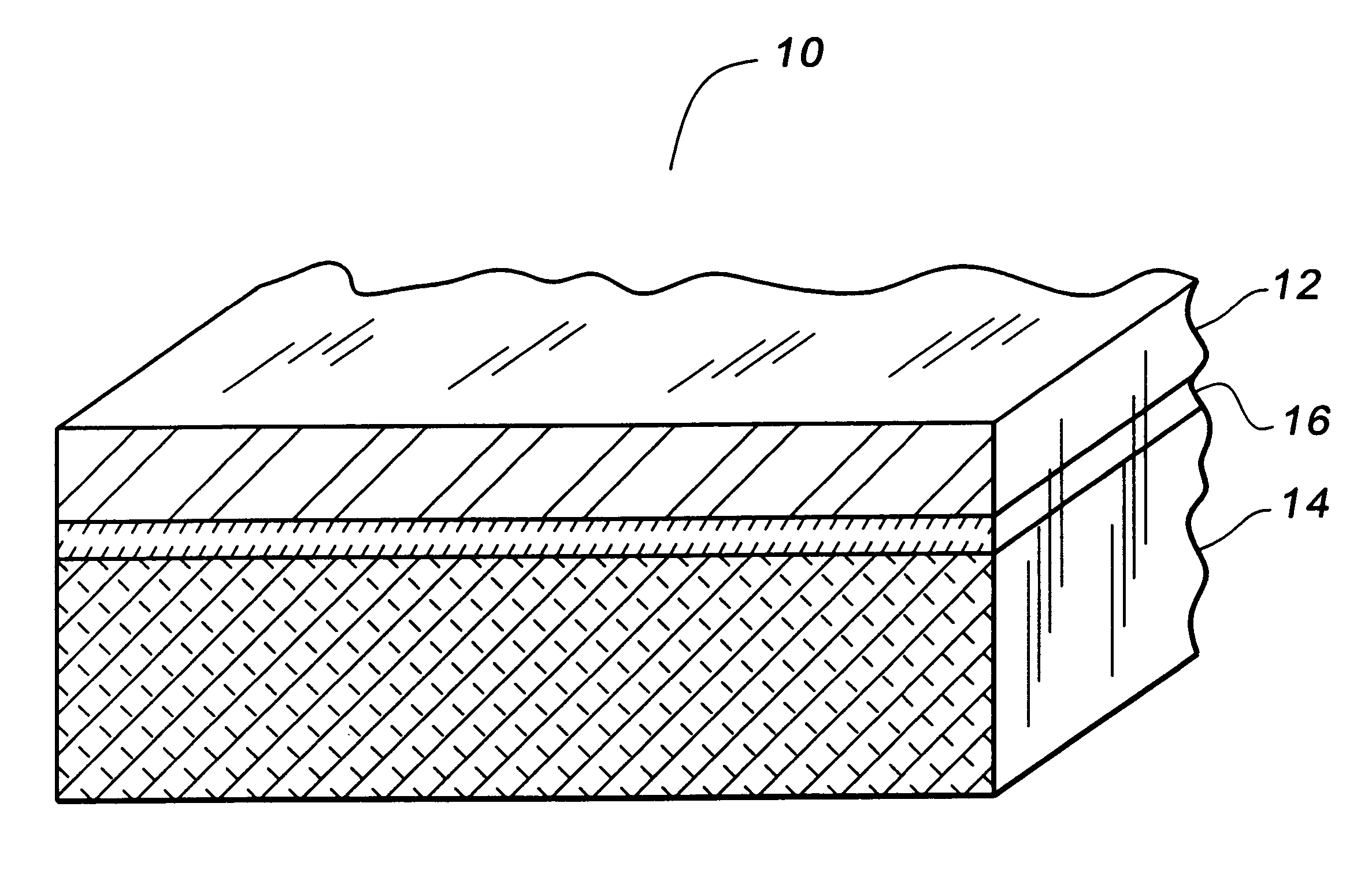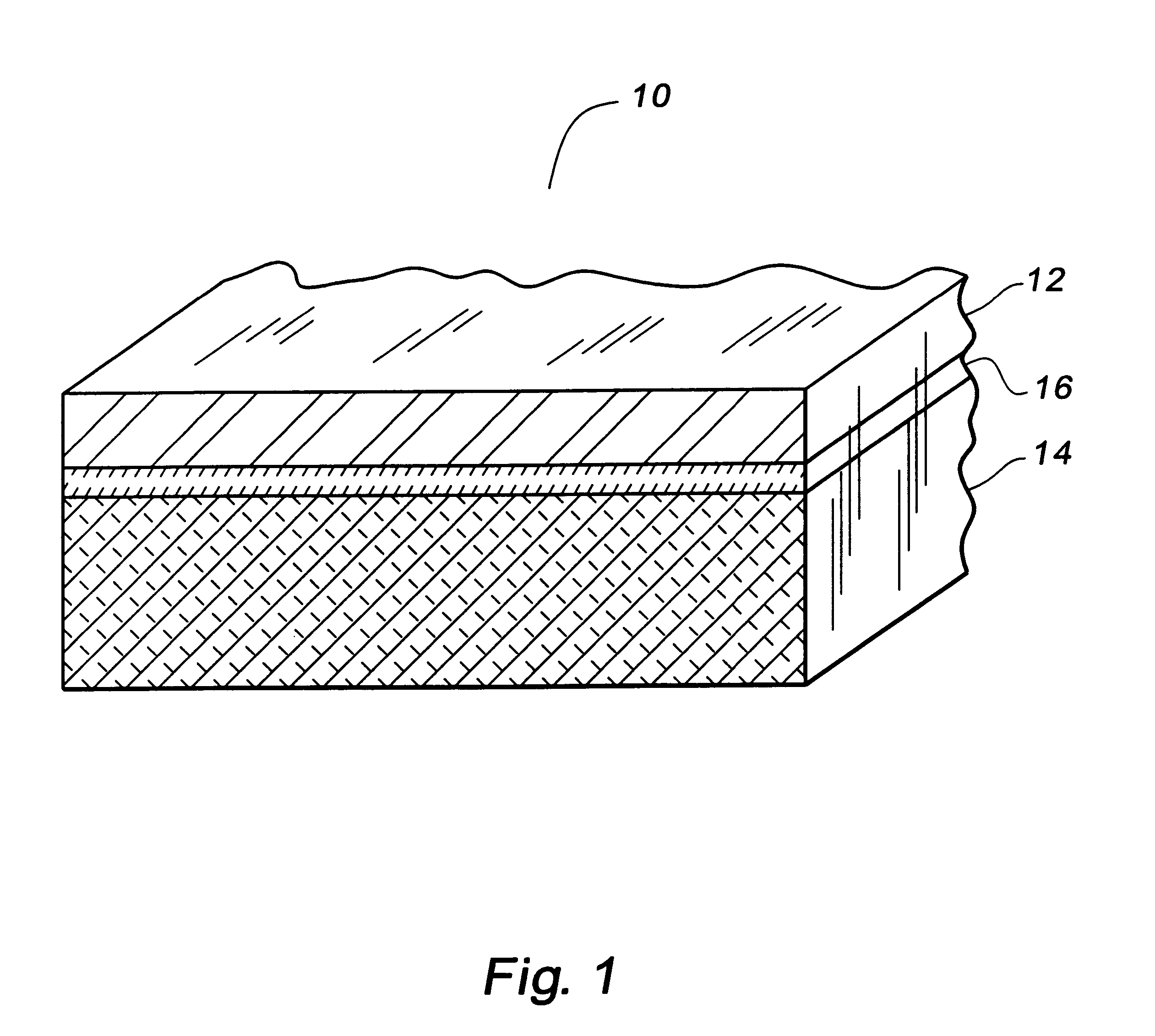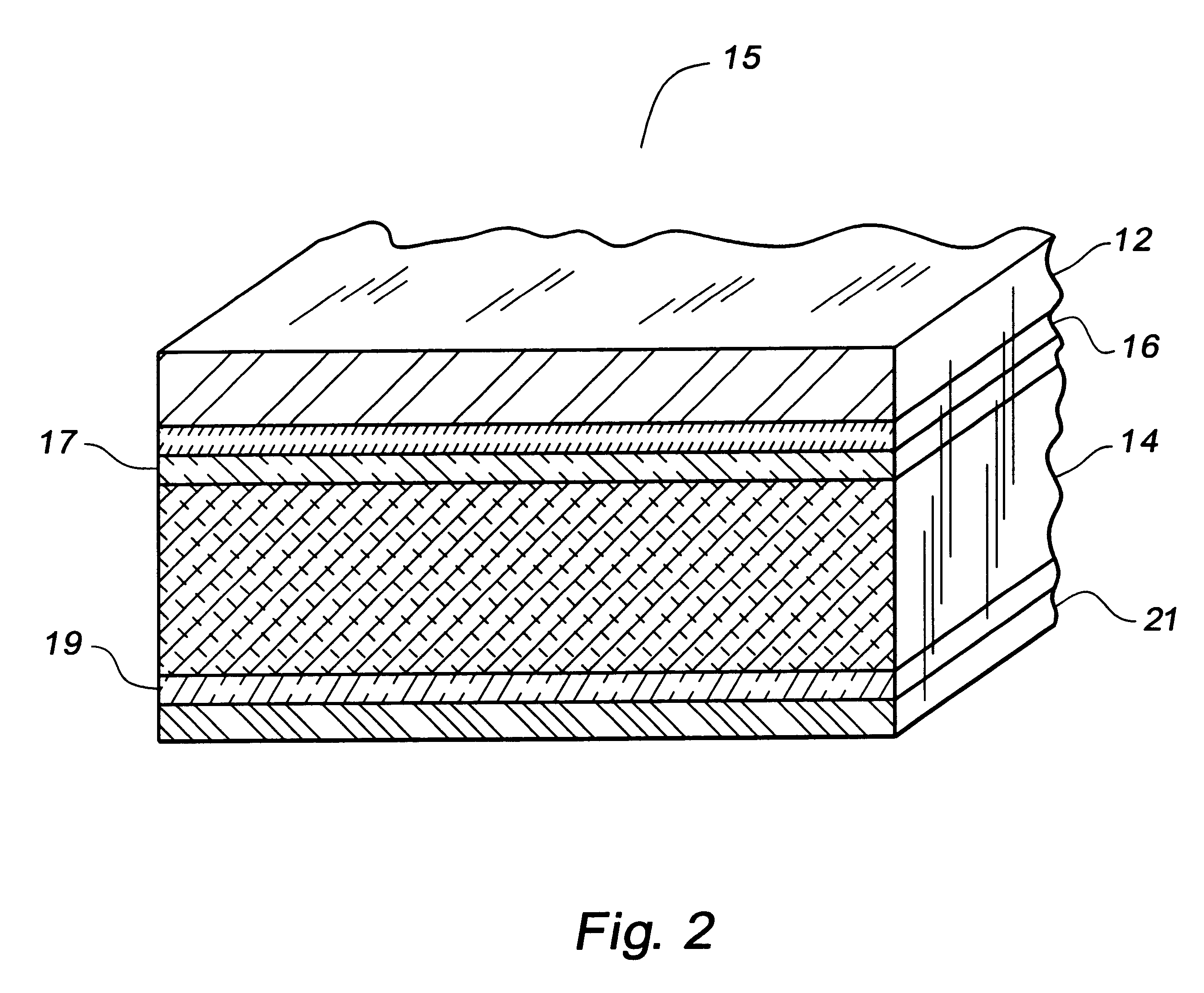Aluminum laminate
a technology of aluminum laminate and aluminum plate, applied in the field of aluminum laminate, can solve the problems of untreated aluminum having a corrosion resistance which does not match, existing surface treatments for aluminum do not provide the specific combination of formability, corrosion resistance, ultra-violet light resistance, scratch resistance, etc., and achieve the effect of reducing the number of defects
- Summary
- Abstract
- Description
- Claims
- Application Information
AI Technical Summary
Benefits of technology
Problems solved by technology
Method used
Image
Examples
example ii
Three different material foil samples, (1) 316 Stainless Steel, (2) 304 Stainless Steel, and (3) nickel, were obtained from Goodfellow Cambridge Limited of Cambridge, England.
The 316 Stainless Steel (316SS) was composed of Fe / Cr18 / Ni10 / Mo3 in a foil 0.05 mm thick. The 316SS foil had an annealed temper and came in a coil width of 300 mm.
The 304 Stainless Steel (304SS) was composed of Fe / Cr18 / Ni10 in a foil 0.05 mm thick. The 304SS foil had a hard temper and came in a coil width of 200 mm.
The nickel was composed of 99.0% purity nickel in a foil 0.05 mm thick. The nickel had an annealed temper and came in a coil width of 300 mm.
The three different material foil samples were laminated onto 5657 aluminum alloy 0.020 inch gauge from the Aluminum Company of America master coil lot no. 721891 using a thin double backed adhesive tape 3M Double-backed Tape (Green release paper) from 3M Corporation and Ciba Geigy adhesive systems obtained from Ciba-Geigy of East Lansing Michigan: Araldite AV 8...
example iii
Stainless steel or nickel foil samples were laminated onto 5657 aluminum alloy. Parts remaining flat were scored with an X for salt spray tests. Some parts were formed in a roll former, and some of those were exposed to 1000 hours of continuous salt spray without a scored X. All parts had sealed edges. A summary of results follows in Table I, with salt spray time referring to time to corrosion.
From the Example III and the Table I data, the 304 Stainless Steel laminated to aluminum may last longer in salt spray than 316 or nickel metal, perhaps because of less difference in the galvanic series between 304 and aluminum. The nickel metal may adhere better with the adhesives selected, and nickel metal may be the preferred overall selection. The concept of laminating a more inert metal to aluminum is technically viable with the proper selection of adhesive and metal.
example iv
An aluminum of 5657 aluminum alloy was cleaned in Henkel A-31K alkaline non-etch aluminum cleaner. Conversion coating was not performed in this case. Adhesive was applied via a draw down bar in a standard laboratory method where coating or adhesive is rolled or smeared onto the surface of a sheet with a bar. The adhesive was applied in a production thickness of between about 0.5 and 1.0 mils. The adhesive was cured in an oven according to the procedure in the respective commercial supplier data sheets. Immediately upon removal from the oven, the adhesive coated aluminum sheet was placed into a "wringer" type roll setup along with the stainless steel sheet. The materials were forced together as the aluminum and stainless sheets proceeded between the 2 rolls.
After assembling, the samples were tested by the following procedure:
This was repeated for 30 cycles. Over weekends, parts were retained in the humidity cabinet.
Table II presents a summary of the adhesion testing versus adhesive t...
PUM
| Property | Measurement | Unit |
|---|---|---|
| thickness | aaaaa | aaaaa |
| thickness | aaaaa | aaaaa |
| thickness | aaaaa | aaaaa |
Abstract
Description
Claims
Application Information
 Login to View More
Login to View More - R&D
- Intellectual Property
- Life Sciences
- Materials
- Tech Scout
- Unparalleled Data Quality
- Higher Quality Content
- 60% Fewer Hallucinations
Browse by: Latest US Patents, China's latest patents, Technical Efficacy Thesaurus, Application Domain, Technology Topic, Popular Technical Reports.
© 2025 PatSnap. All rights reserved.Legal|Privacy policy|Modern Slavery Act Transparency Statement|Sitemap|About US| Contact US: help@patsnap.com



